Interview: Rea Lynn de Guzman | San Francisco, California
Emergent Art Space writer Paola Loomis visited Rea Lynn de Guzman during the exhibition ‘Cut from the Same Cloth’, at the Root Division Gallery in San Francisco, where the artist presented her new series ‘Retaso’ (Fabric Remnants).
Rea talks here about her Filipina-American experience, and how her work reflects on the Spanish colonial heritage in her home country and challenges the stereotypes about 'ideal female beauty and status'.
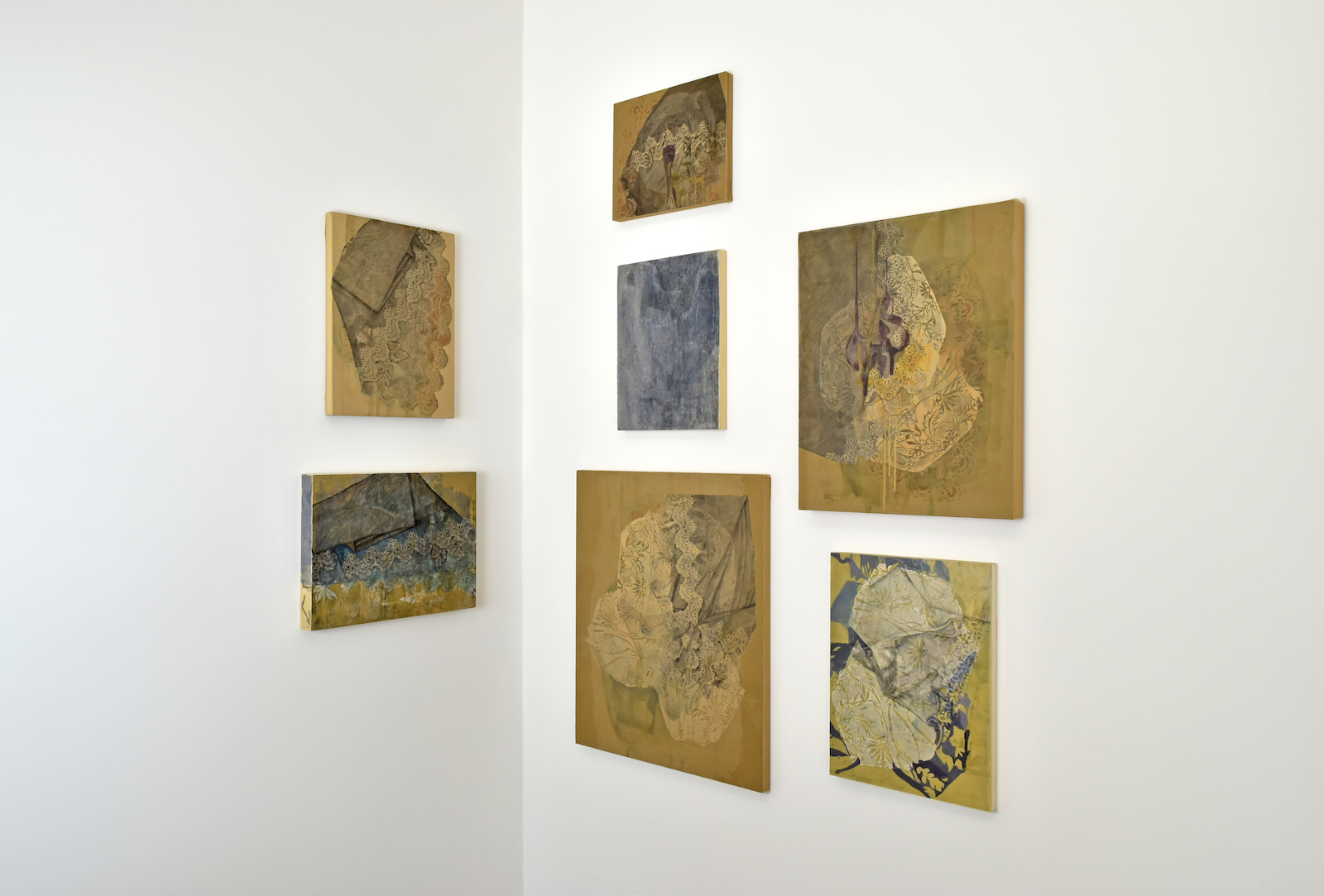
The work exhibited here is very compelling, evocative, and most original. Can you tell us what in your life led you to become an artist and what inspired you to produce this remarkable series?
I loved art as a child but didn’t have the privilege of being exposed to it very much growing up. In college, I was initially a business major at the University of California Riverside. It wasn’t until I attended the City College of San Francisco, where I took art classes on a whim to fulfill requirements, when I rediscovered my passion for art. My painting instructor saw some potential in my early work and encouraged me to pursue art. The CCSF art department nominated me for a scholarship, which enabled me to transfer to the San Francisco Art Institute. That’s where I gained further foundational skills, and found catharsis and more meaning in art; it helped me deal with the displacement and familial disconnect I experienced from my immigration to the United States from the Philippines at age fourteen.
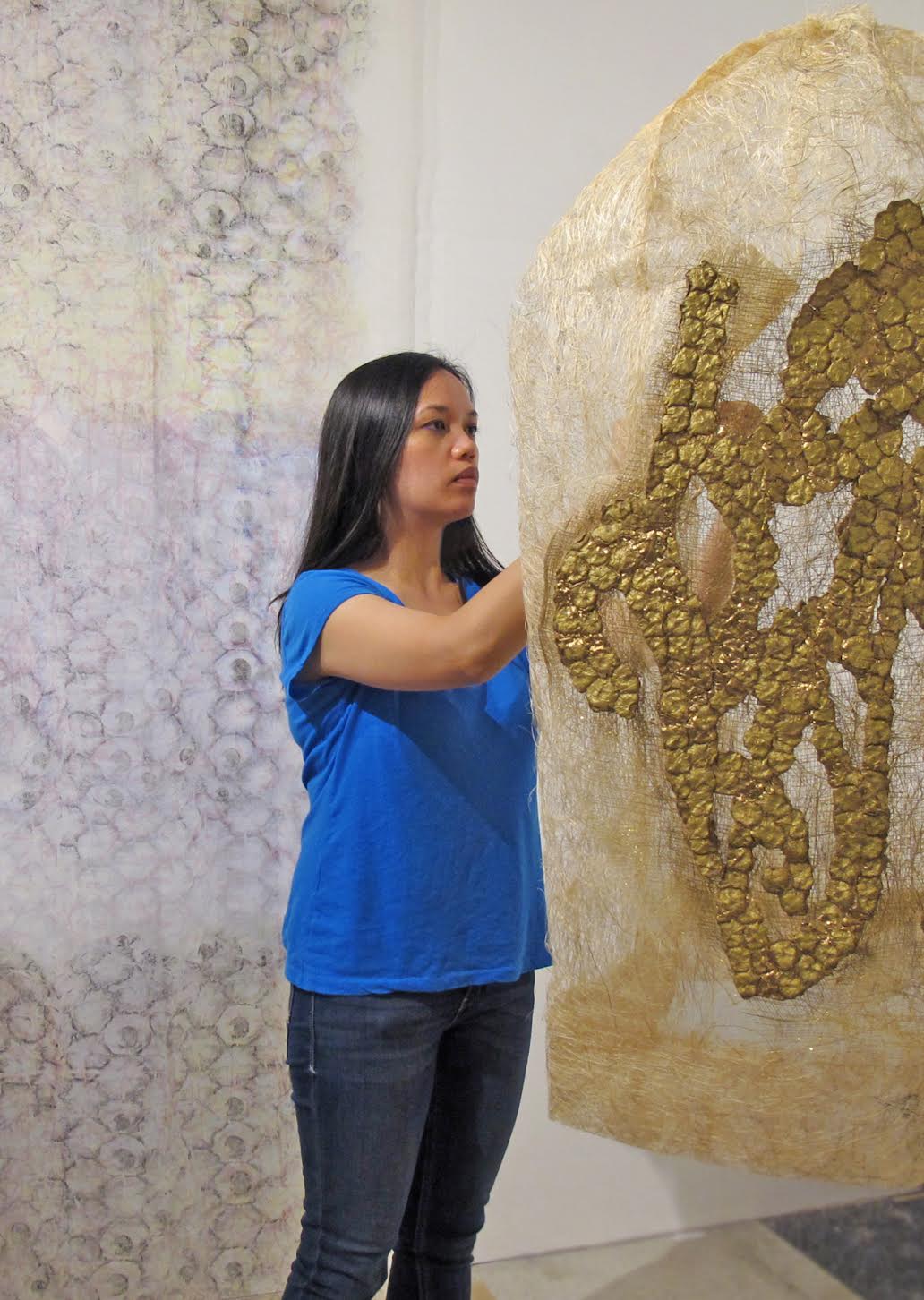
I see my ‘Retaso’ 2015-2016 series as a further developed extension of my ‘Filipiñana’ series, which I worked on in 2014-2015. Many events inspired me working on these series, including experiences and memories of: growing up in the Philippines, attending an all-girl Catholic school, moving to the US, returning to visit my native country over the years, reconnecting with family while recognizing the resultant disconnect, and how all of these converge and interplay with my everyday life of being an immigrant in the US. Along with these factors, as a Filipina-American artist, I am curious how Filipinas are viewed, expected to act, and their historical ties with colonialism and patriarchy. In the ‘Retaso’ series, I reference the iconography of 'Maria Clara' (1) as it has been an embodiment of the ideal Filipina for more than a hundred years.
What can you tell us about the fabric remnants themselves? Where do they come from? How did you gather and select them? Do they have individual stories that you are aware of?
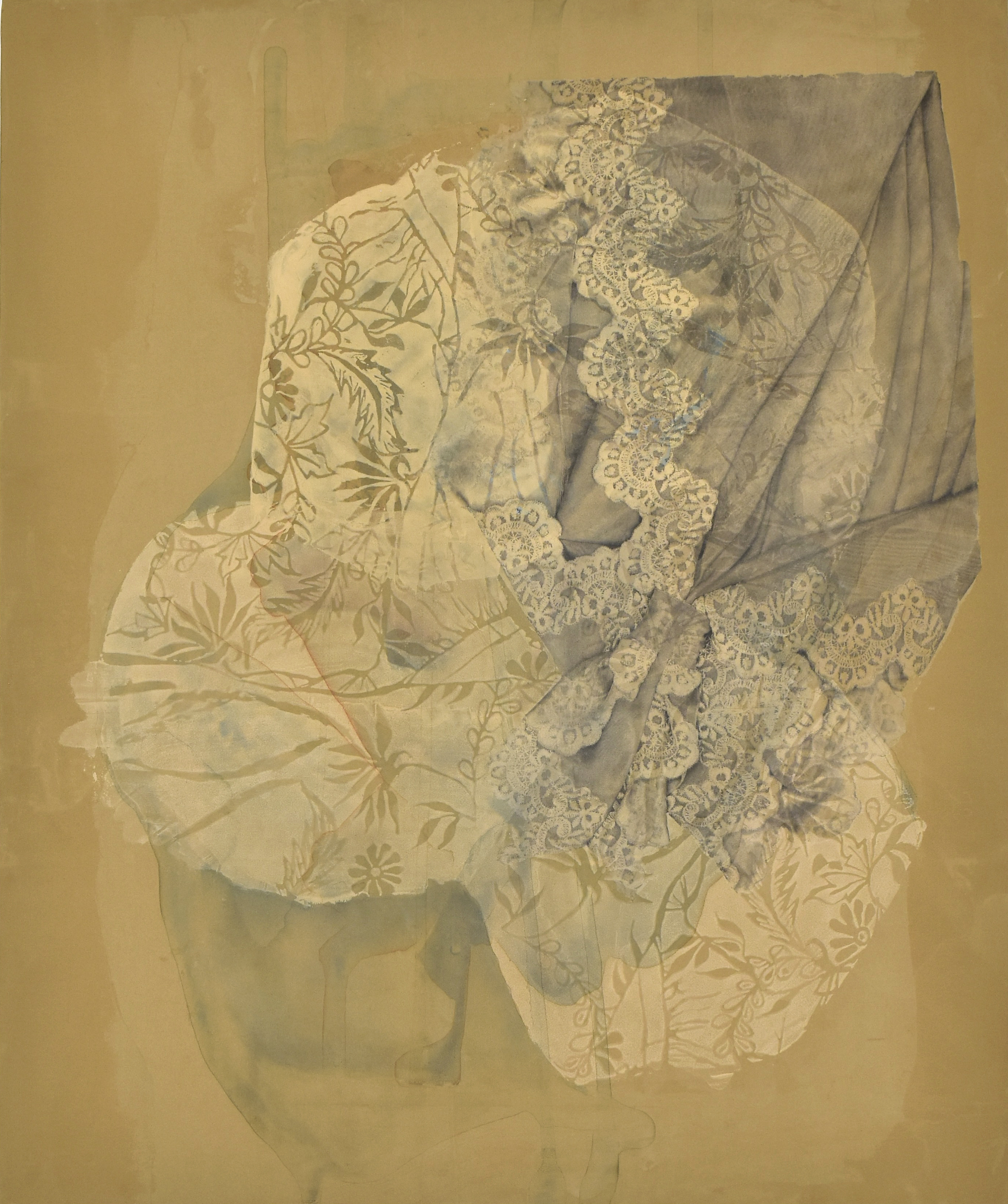
Conceptually, I think of the remnants as these abstract, resilient ideas or beliefs, which continue to linger in existence no matter how times have changed or how much has been appropriated or colonized. Specifically in my work, remnants also symbolize lingering stereotypes of the ideal Filipina. I am drawn by the materiality of the synthetic organza (organza as an ingredient in the 'Maria Clara' dresses, woven with piña fiber) and its subtle, sheer beauty, amidst its haunting/ghostly, and mysterious qualities. I focus on the synthetic to emphasize its fake-ness, echoing the expectations of the Maria Clara embodiment in Filipinas. In addition, I select colors that evoke skin tone variations to highlight the spectrum of brownness to 'Maria Clara'’s preferred whiteness as a mestiza, which has been equated to the ideal female beauty and status in the Philippines.
The diffusely layered works invite multiple readings and interpretations from the viewer, but they also invite the question, “How did you do this?” What are the techniques that produce mysteriously beautiful layered image transfers?
In my work I am drawn to specific materials that carry symbolic meanings. Doing the image transfers and layering them obsessively emphasize the displacement and dissociation of specific images. When I photocopy actual 'Maria Clara' dresses, I take them out of their context and make a copy from the original. I then transfer the copied images onto various synthetic organza remnants using acrylic medium. When dry, I tear the paper and rub the remaining paper pulp off the fabric laboriously (in a way echoing the labor-intensive way the artisans extract piña fibers off of pineapple leaves, a distinct ingredient woven with organza in the 'Maria Clara' dresses). I then cut the synthetic organza with image transfers into pieces, re-position them, and layer them together to form new compositions and possibilities. At times, I layer them over ghost monoprints I’ve created, inspired by the 'Maria Clara' dresses, to create more depth and complexity.
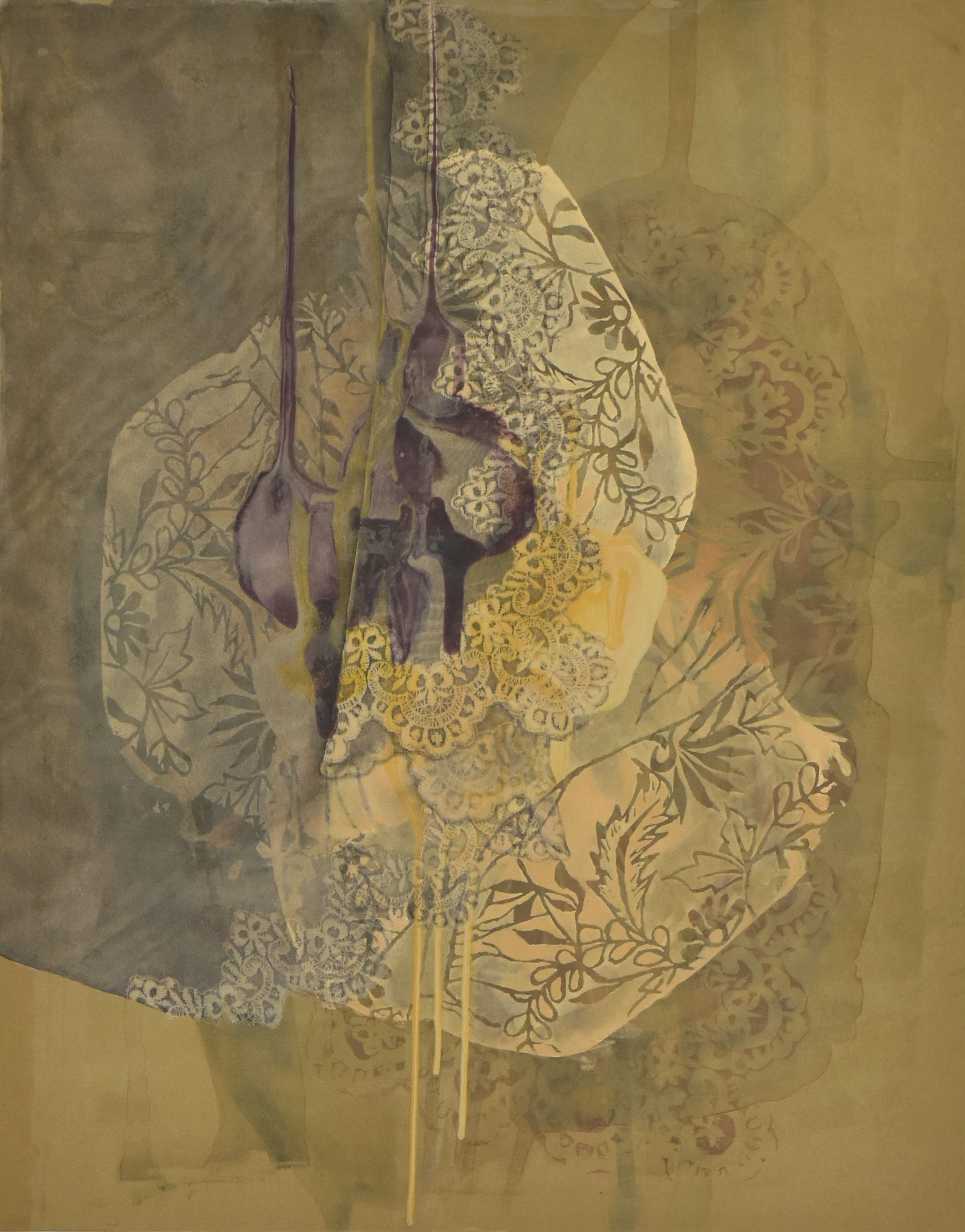
In “Spliced”, “Cloaked” and “Streaked” you use a dripping technique. What are your intentions with this?
The dripping technique resulted from varied experimentations. In my 3-dimensional work Piña Offerings, the fluidity of the drips is reminiscent of when the wax pieces were still in liquid state. I am intrigued at how the drips can freeze the memory of change. The cyclic nature of how wax starts as solid, melts into liquid, pours into new assimilative forms, and the possibility to melt it again, is fascinating. I wanted to see what it would be like to incorporate and layer these changes into my 2-dimensional work. Using a technique in acrylic media, I specifically choose exaggerated colors that remind me of skin tone variations and pour them together.
Now let us turn to readings, interpretations, and meanings... You say that you use the tactility of specific materials such as synthetic organza and image transfers to repudiate the ideals and stereotypes of 'Maria Clara' ideal of female beauty and deportment. Can you comment upon these ideals and stereotypes? What makes them particularly Filipina/o? What makes them universal? And what is the nature of the repudiation embodied within the ‘Retasos’?
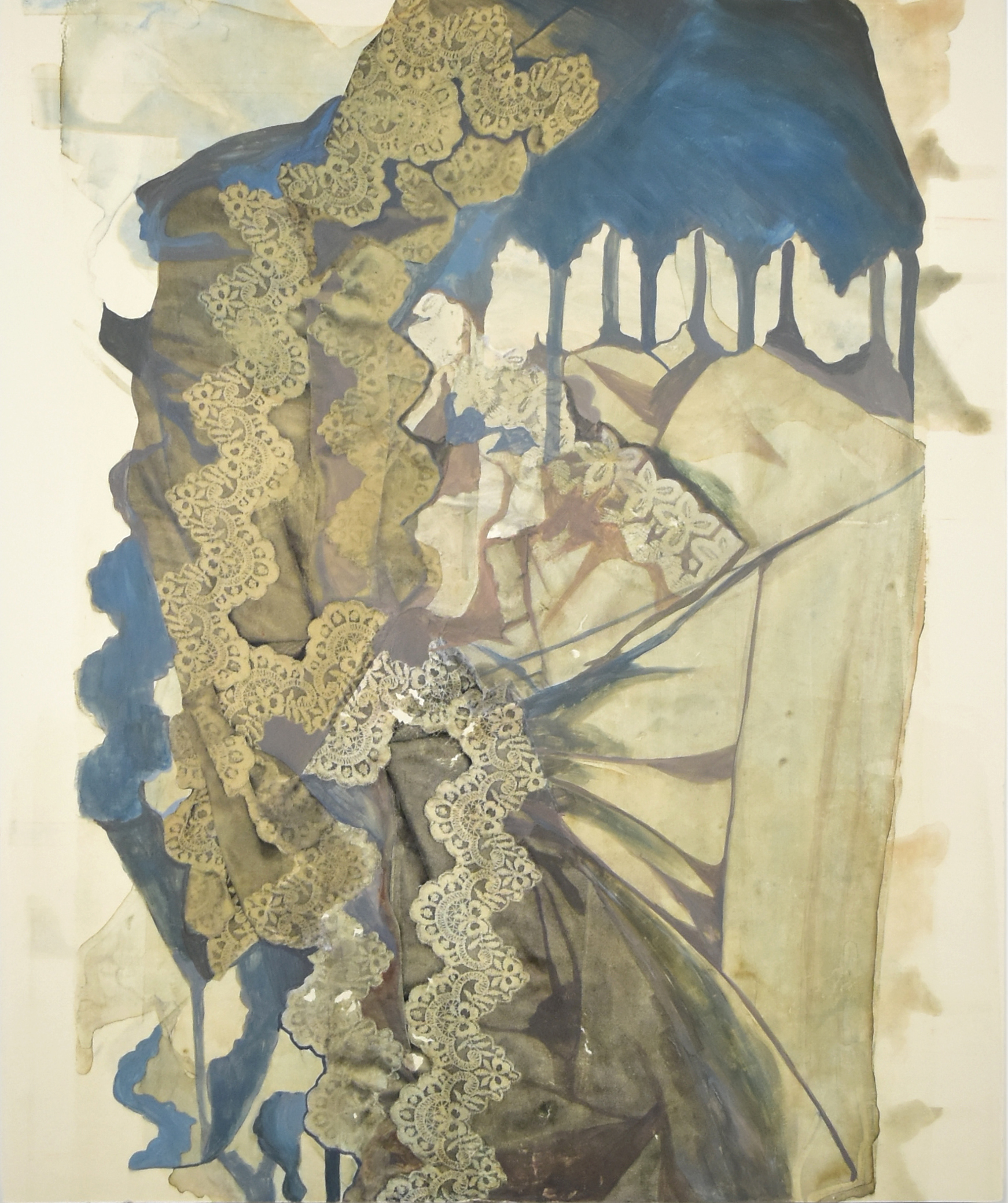
The ideals and stereotypes embodied in the 'Maria Clara' include: chastity, demureness, grace, martyrdom, passivity to patriarchal power, religious piety, and beauty equated to having light skin. When growing up in the Philippines, I soon realised that those having lighter skin tend to be deemed more attractive and desirable. Many skin-whitening products such as glutathione injectable, skin-bleaching treatments, soap, etc., are widely accepted and used to achieve this ideal whiteness. When I visit the Philippines, I am immediately bombarded with images—billboards, signs, television commercials— advertising these products with mestiza models. The majority of Filipina celebrities and representatives for beauty pageants tend to be mestiza. I find that this phenomenon is also present in many other Asian countries. What makes them universal is that the media representation of beauty, desirability, and status in women tend to be Western/Euro-centric, as this is what I saw on TV and in US fashion magazines I leafed-through as a teenager, when I was trying to assimilate to my adoptive culture.
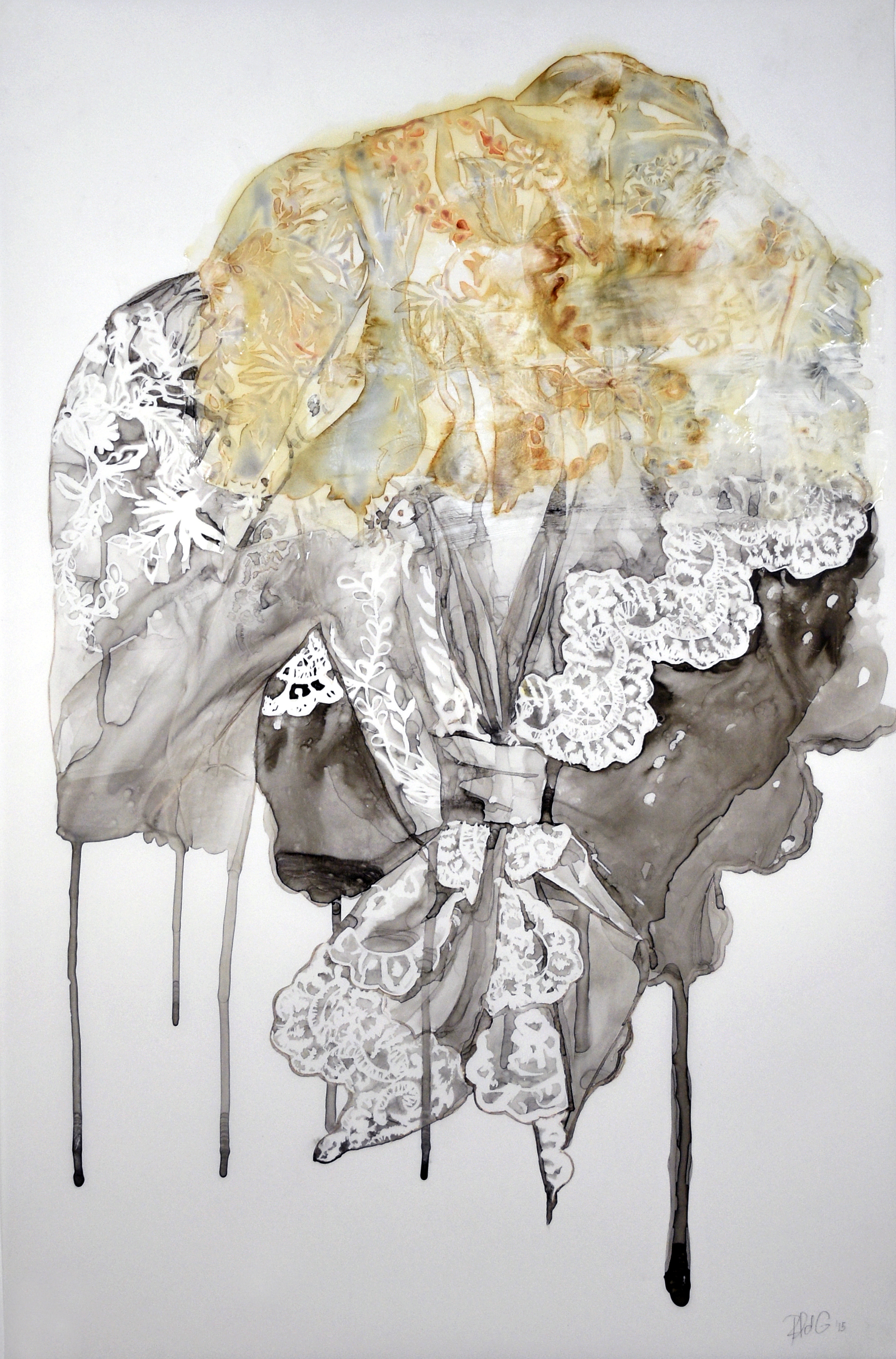
In my work I repudiate these ideals and stereotypes by emphasizing the artificiality of it all, by using synthetic instead of real organza, by copying the original dresses, duplicating the images, and transforming them into something else, by displacing these ideals into a different context, a different possibility, layered in complexity.
What is the over-all artistic, socio-political message you would like your viewer to take away from this compelling series?
I want the viewer to question the stereotypes we’ve just discussed, to think about unbalanced power structures and hegemony in colonized cultures. I want my work to empower Filipinas and inspire them to stop bleaching their skin and injecting glutathione. Shades of brown skin are beautiful and in no way shape or form inferior to whiteness.
Where do you see yourself going in the future with the issues raised in ‘Retaso’, or do you see yourself exploring new issues, new directions?
I want to focus more on issues of skin whitening. I want to challenge myself to be bolder in expressing these concepts and metaphoric repudiations. As of now, however, I don’t have a specific plan on my next endeavor. I like to let my materials and experimentations inspire me as I move along in my art.
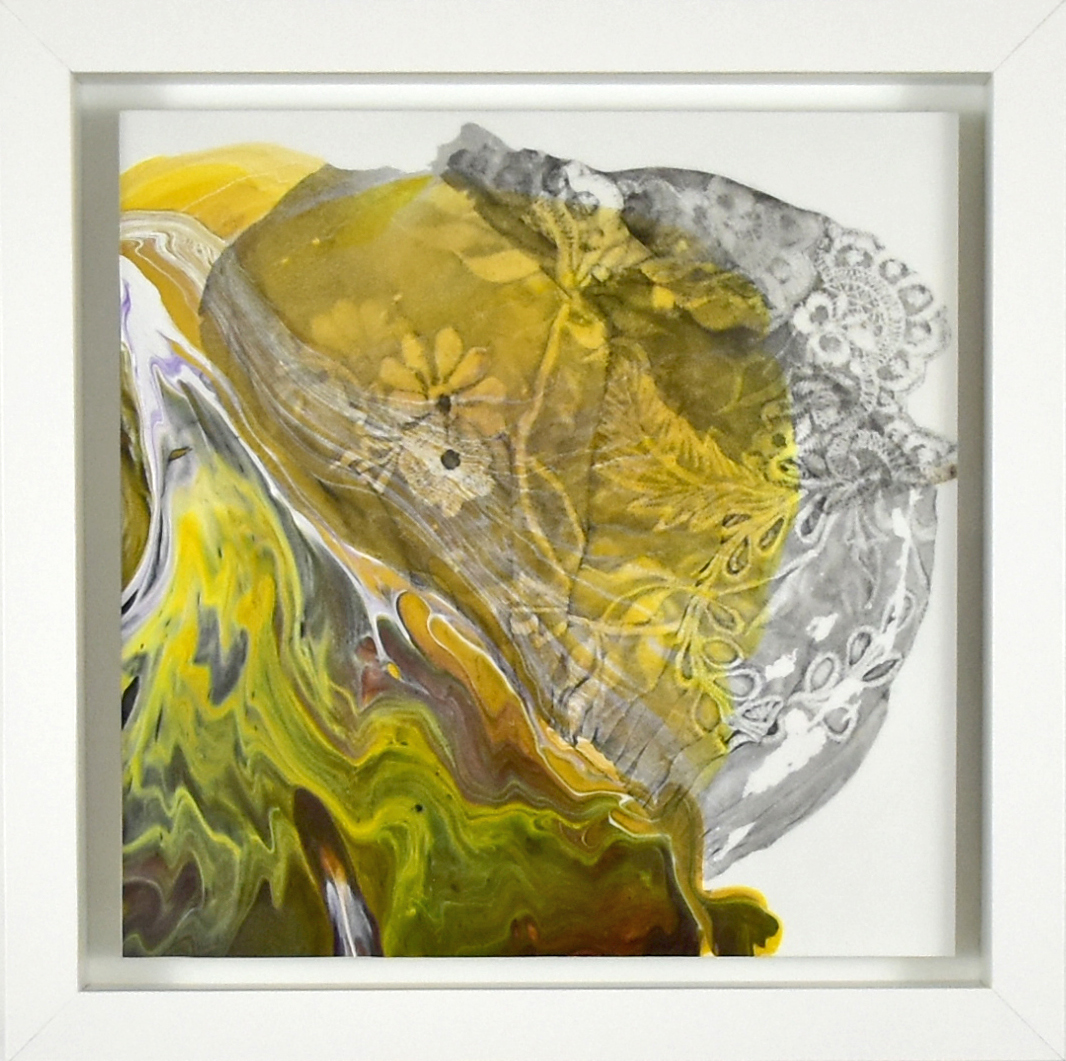
Do you think artists need “critics”, or should images stand for themselves? If yes, what do you feel is the role of critics in art?
I believe critics are important. I think of all viewers as critics. Without viewers, art would be pointless. For me art is the exploration and expression of ideas and concepts that I find important, reflecting significant issues in contemporary times. As an artist, it is invaluable to receive critical feedback, to learn of the affect my work has on viewers, to hear of their insights and perspectives. The resultant sparks in conversations, questions, debates, or emotions make the work much more powerful than the art object itself.
Note (1): 'Maria Clara' is a mestiza (half Filipina and half Spanish) character from Jose Rizal’s novel 'Noli me Tangere', and has become a metonym for traditional dresses woven from piña fiber and organza. Influenced by Spanish colonization, the character of 'Maria Clara' embodies Philippine ideals of female beauty, equated with light skin, and accompanied by stereotypes of chastity and demureness.